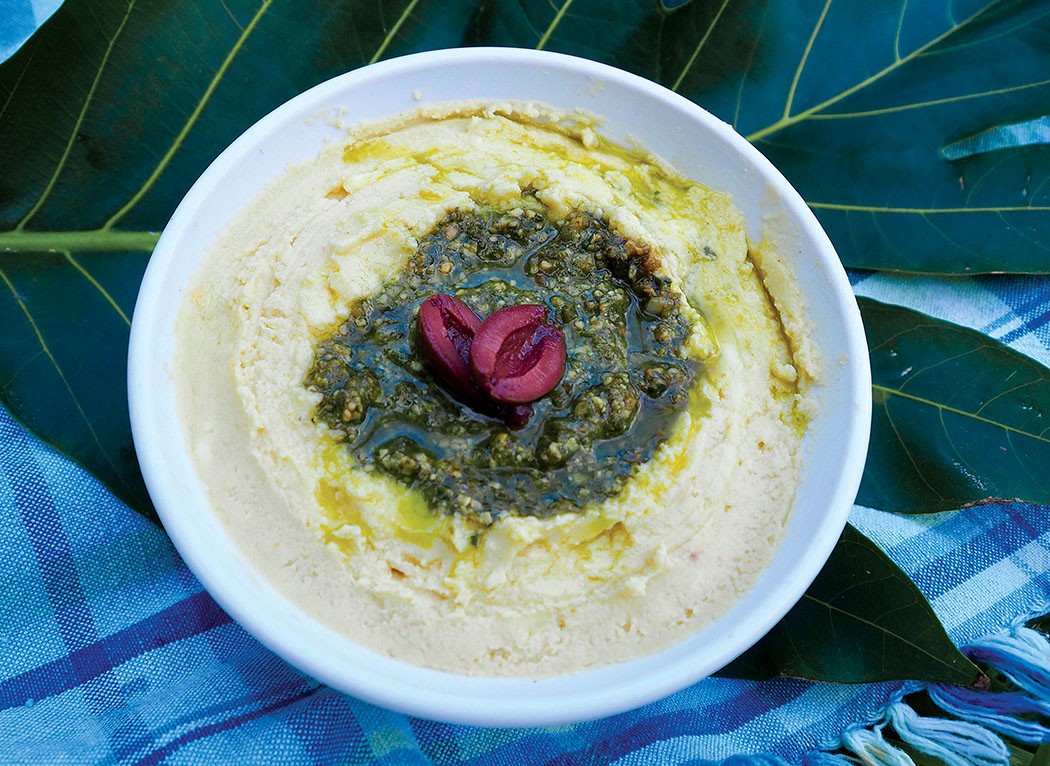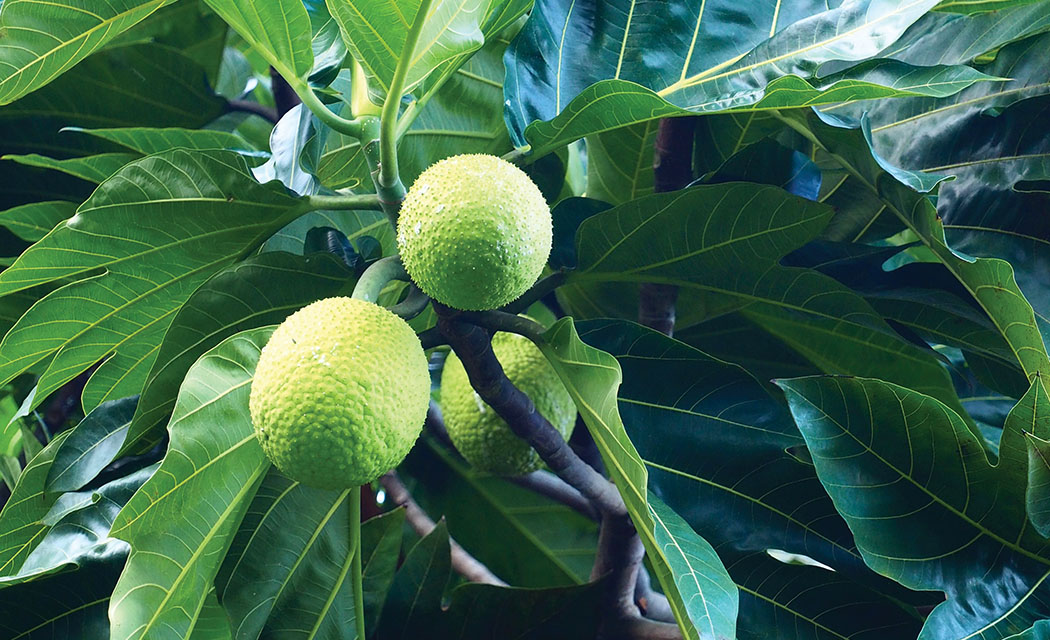
Local Food: The Bounty of ‘Ulu

By Brittany P. Anderson
There is something effortlessly regal about an ‘ulu (breadfruit) tree. The dark green leaves look like oversized hands gracefully waving in the breeze and the attractive trees’ towering size, up to 60 feet, give them a stately appearance.
On the far side of our farm, there stands an ‘ulu tree, planted along the seasonal streambed with its branches stretching out as wide as it is tall, creating a dense shady haven. I often sneak over, neglecting a farm chore or three, to escape the heat under the ‘ulu branches.
Polynesian settlers brought ‘ulu in their canoes to Hawai‘i, and it is considered one of the most important plants to the life and culture of our islands. Ancient ‘ulu groves are said to have produced enough nutrition for thousands of people. An ‘ulu tree can bear 50 to 170 fruits ranging from two to 10 pounds each. It is not uncommon to stumble upon an old grove of ‘ulu or, like our farm, find them dotting the landscape of a forgotten plantation field.

As the tree ages, its fruits become smaller but its legacy lives on by sending out a “start” from its roots. The little starter tree will eventually replace its parent, propagating indefinitely under the right conditions. Breadfruit trees have an uncanny ability to adapt and thrive in harsh conditions where no other plants could survive. Though it favors fertile, well-drained, deep soils, some varieties can flourish in sandy, salty conditions.
Adult trees enjoy the sun, but young growing trees prefer the dappled shade of an understory—a loving shelter provided by its parent tree. An ‘ulu can fruit for 50 years or more, some are even known to fruit for 100 years. We have no idea how old our tree is, but it has sent up two starts readying to become its replacements—thoughtfully thinking ahead so we would not be left without.
Most of the varieties of breadfruit found on Hawai‘i Island produce from late summer into winter; however, with careful planning and the right conditions you can have several breadfruit varieties producing at different times, affording a year-round bounty.
The Hawaiian ‘ulu is round, light green, and decorated with a quilted-patterned skin that is somewhat rough to the touch. The flesh is white to cream colored as it ripens.
My experience cooking ‘ulu is not extensive—I’ve eaten it as chips and added it to stew. Initially, I found breadfruit surprisingly intimidating until I discovered that ‘ulu fruit can be utilized in virtually every stage of growth, making it a versatile kitchen companion.
A trail of sap on the outside skin means the ‘ulu is ripening. Newly ripened ‘ulu fruit is an easy substitute for potatoes: they cook and taste similarly. Breadfruit will continue to ripen after being harvested. A very ripe ‘ulu is soft to the touch, sweet, and is excellent for dessert or pancakes.
‘Ulu have a small amount of white sticky sap that can be reduced by thoroughly washing under cold water, patting dry, and placing in the refrigerator to chill. If you still find the sap to be a problem, rub a little oil on your knife. I avoid all this by baking it whole, wrapped in aluminum foil, for one hour at 375˚F. Once cooled, I can cut the skin off without any stickiness.
We are fortunate to have such a bountiful supply; two neighbors have much shorter trees—an asset for hand picking. One tree produces far too much for one person, and a simple ask can result in an ‘ulu gently placed at your door.
The following recipe for ‘ulu hummus is great for a picnic, like the Ke Ola Magazine 10-year anniversary concert on January 19, or an easy lunch under the shade of your favorite ‘ulu tree.

‘Ulu Pesto Hummus
3 cups mature but firm ‘ulu, cooked and cleaned
½ cup lemon juice
2 Tbsp macadamia nut oil
2 Tbsp avocado oil
4 Tbsp tahini
2 Tbsp olive oil
3 Tbsp pre-made pesto
Method
Combine the first four ingredients in a food processor. Add olive oil a little at a time until the mixture is smooth. Spoon into a container making a small well in the middle. Scoop the pesto into the well and refrigerate until serving. Enjoy!


